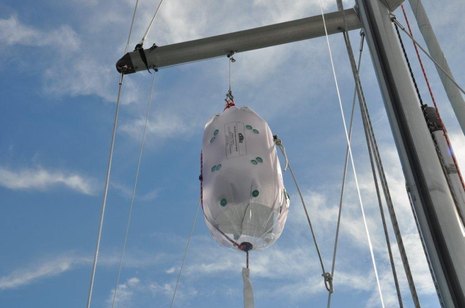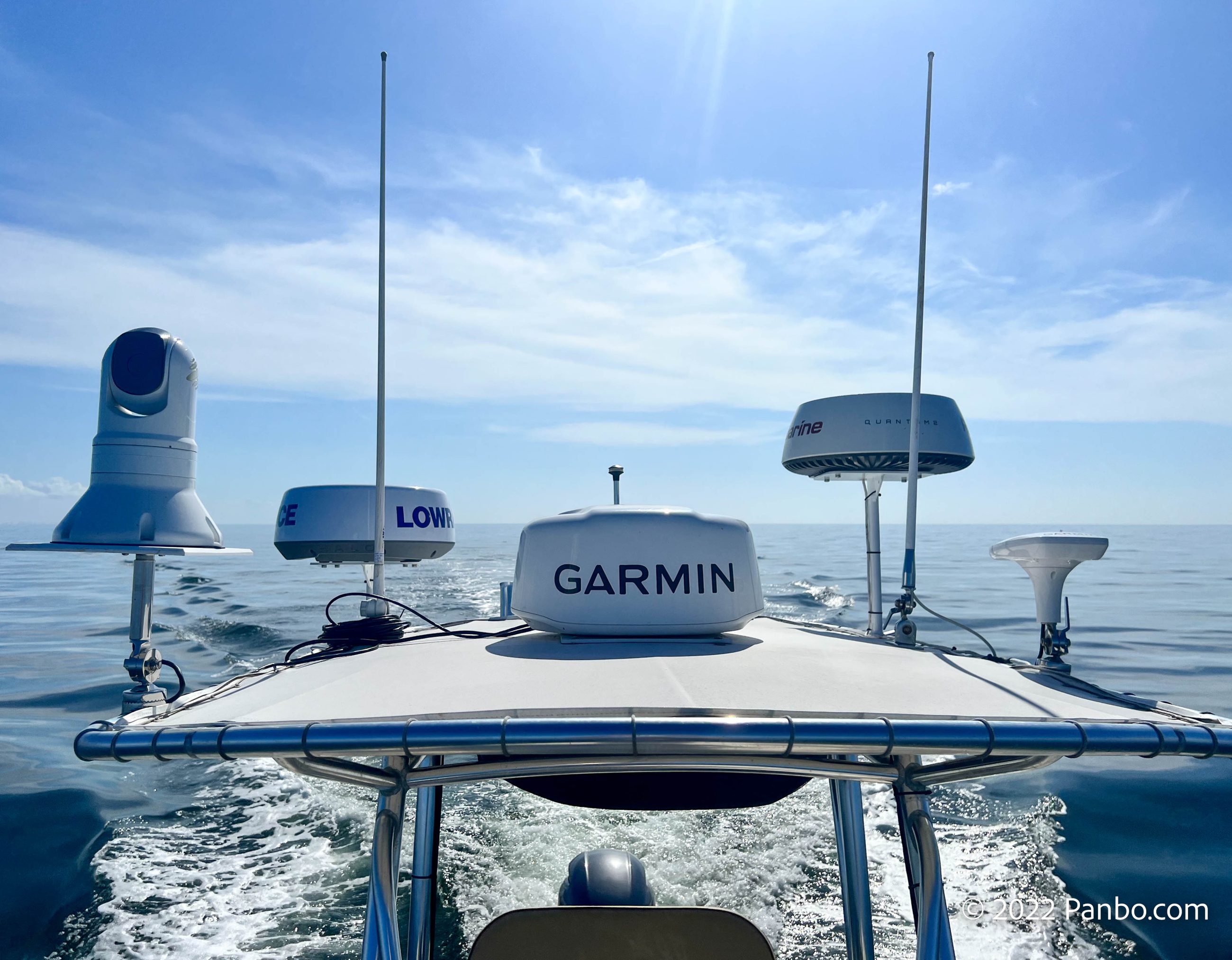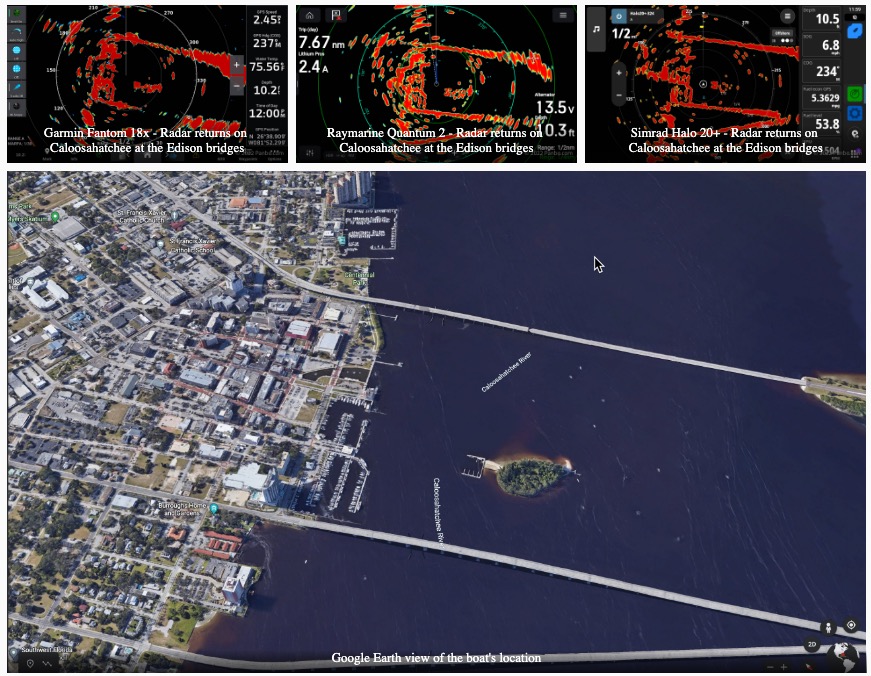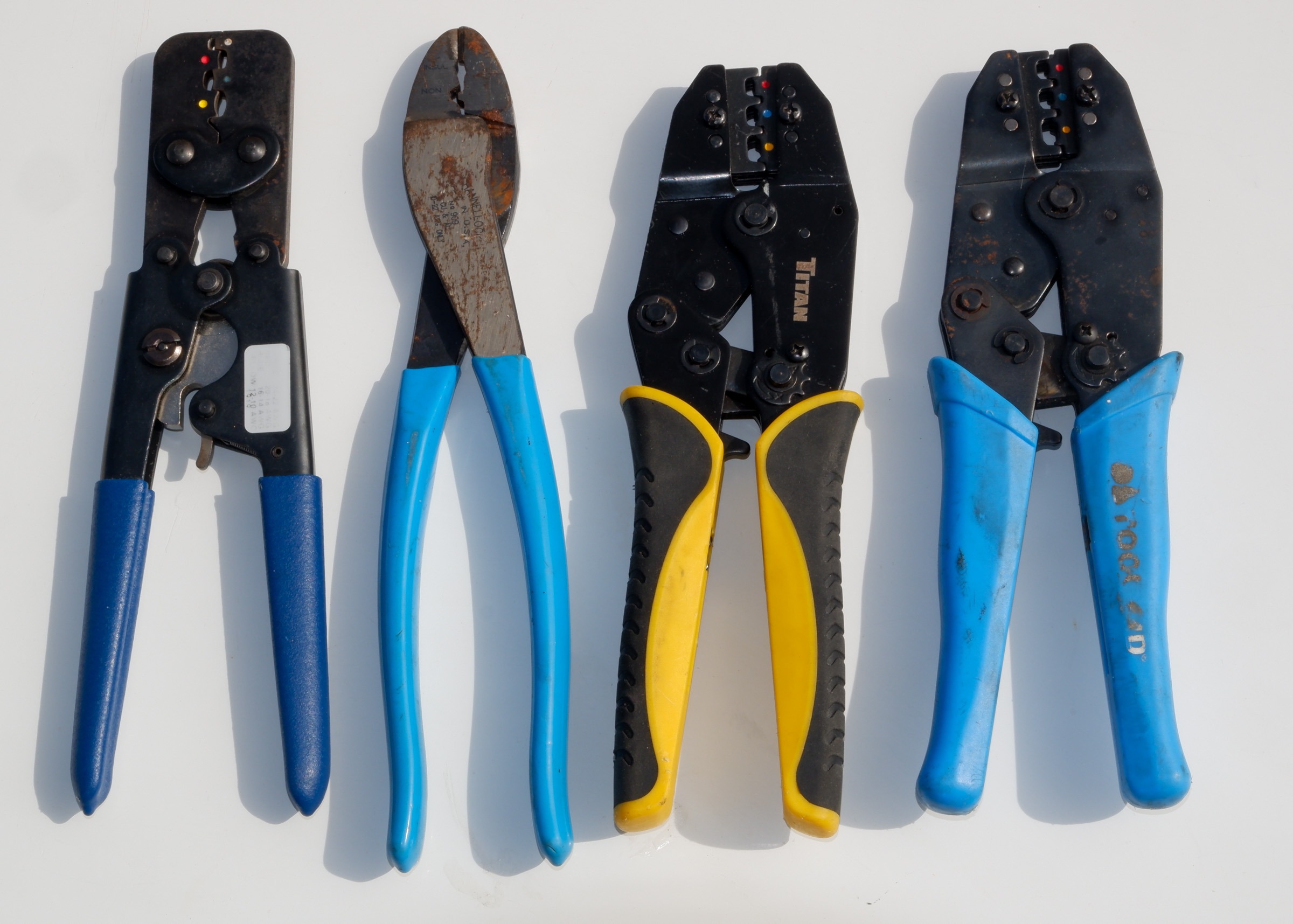Echomax RTE looks great, but what about USA?
I first got excited about RTEs (Radar Target Enhancers) in 2002 when the Sea-Me came out; in fact, it inspired one of my favorite PMY columns (in which you’ll also learn why I want a whomping big horn on Gizmo). The Sea-Me went on to be quite a successful product, at least in the U.K., but now Echomax — the Brits who already build a respected line of static radar reflectors — has come out with its own Active-X RTE, and apparently it just plain kicks Sea-Me’s butt…
Active-X returns a much larger Radar Cross Section (RCS) when painted by another vessel, even at at greater angles of heel; it uses less power while in action, or on standby; and it can alarm you when painted in ways Sea-Me can’t. And I’m not just going by Echomax’s own words and lab testing (excerpt below). I’ve seen a Practical Boat Owner head-to-head test article that leaves little doubt. In PBO’s on-water trial, an Active-X mounted on a RIB held MARPA lock to 6.7 miles, while a Sea-Me went away at 5.5, and it faded away more slowly when heeled. But there are some issues regarding RTEs.
One is that the current contenders only work with X-band radars, and don’t enhance your target at all if the ship coming at you is using S-band. I don’t have much sense of which radar sets ship bridges, but maybe some readers do? I also wonder, as does PBO, if Class B AIS transponders won’t largely solve the being-seen-by-ships issue? And then there’s the question of RTE sales in the USA. Though I asked Sea-Me about this years ago, it’s still unclear to me if an RTE requires FCC approval (probably) and what that would take. Or if they even care. I know Echomax is looking into this but is a little daunted by the attorney fees just to get started. Would any Panbot care to advise them, and, more important, would any consider an Active-X if available (for about $650)?














Remember that these guys don’t show up on the Navico BR24, as they don’t detect the ‘paint’ made by frequency modulating radars.
I think the value of these systems is not so much for heavy trafficked inshore or near shore areas such as the US eastern seaboard or Western Europe. In those areas you’re better of with AIS. The alarm facility becomes useless — you’d go crazy from the ‘beeps’ when you’re seen on somebody else’s radar screen, as this is pretty much all the time. In those areas all big ships that pose a large threat of running you down will carry AIS (even though they may not be transmitting, like the navies.) Small vessls don’t but I wouldn’t rely on them seeing you on radar either.
In more far-out situations I can see where knowing that somebody else is in the neighborhood might be very handy, and in that case the Active-X seems a much better case than the Sea-Me, especially the lower standby current.
Apparently Sea-Me is working on an X & S band model. When this comes out – I think it’s a safe bet that Echomax won’t be far behind.
From what hearsay I have heard about Sea-Me, the owner is an old guy past his use by date, who has not spent a quid in many years on anything related to the Sea-Me to further enhance the product. I would be very surprised if what you say is true. I am reading popular UK magazines and have not seen a single word about what you say. Perhaps, I missed something. But I do agree that Echomax would be right behind them, or, more likely, right in front of them. We shall know soon enough.
Remember that these guys don’t show up on the Navico BR24, as they don’t detect the ‘paint’ made by frequency modulating radars.
Yes and no. Sea-Me could modify their RTE to do this, but currently has no plans to do so. For Active-X the user can make a simple change in the way power is supplied to the antenna to do this. The disadvantages are 1) that standby current increases to 200 mA (since it is always ready to respond rather than being put in this state by a radar ping — the same as what Sea-Me would do to work with these radars) and 2) the unit can’t warn when radars are detected (it will always be in the ‘detected’ state).
The radar detector feature is an extra; the main role is as an RTE.
Regarding your 2002 column, there’s nothing that parts the ocean like a Kahlenberg. Good fog tale. Forget radar, just sound that horn in the fog and listen to all the transmissions blow damper plates. I would put a K380 up top and just set a constant bearing and engage that old Robertson of yours.
Regarding S vs X band. The Ships are required to carry BOTH. In Rain or bad weather they rely primarily on S Band and as soon as the rain/ precip clears they go back to X but both are operational at all times. Check the IMO.ORG regulations.
S Band for the same transmit power and antenna size has 3 times less cross range or angular resolution than X band so finding small targets at sea in a rain storm is less likely as the Target to Sea Clutter ratio is going to go negative in a hurry at S band (big clutter patch area due to beamwidth – range resolution in conventional radar is the same).
Conventional X band can be relied upon when there is modest wind / sea state and only light rain to pick out smaller targets.
So when the chips are down and you really need to be seen – an S band repeater is the better choice. At night in clear weather X would be better.
Seems to me that the very best solution is your OWN radar combined with AIS. Its going to be a slam dunk to find the ships bearing down on you in all but the very worst of conditions and then you have other survival issues. Finding other small vessels is a tougher issue but still relatively doable.
I have had my share of being run down in our trawler in fog by little aluminum fishing buzz bombs going 20 knots like idiots trying to get to the ‘other side’. Those little threats (20ft alumawelds going all out to catch fish in the fog) are not carrying AIS or Radar or anything else that is helpful. All you have is your radar and a sharp eye. They seem to show up between 1 – 1/2 Nmi on radar in decent conditions.
A combination of AIS and your own radar is the best combo for safety in my book. Knowledge of the shipping lanes in your area helps a great deal with looking for the heavy metal bearing down on you – so that the only real task is looking out for fellow breatheren in anything from a dinghy to a serious 100+ ft yacht. IN heavy rain you would be relagated to looking for AIS targets on a chart plotter and keeping a sharp eye out. The ships will have shifted to S band and will not use X in heavy rain. So unless the RTEs are going to cover both – the X band system would let you down in heavy rain.
I wonder about the ability of the RTEs to amplify a linear FM continuous wave signal (BR24) without significant distortion. I’d have to see that tested. Even if it did amplify the Linear FMCW transmission, I suspect the displayed signal would be a small, all be it bright dot – not extended in range, perhaps a bit in azimuth but it would not appear physically larger (more pixels on screen) so as to be more noticeable.
In fact I wonder if the BR24 isn’t better in rain and sea clutter conditions anyway and would provide a better chance of finding the alumaweld nut case and avoiding him. The rest of the big stuff can be seen by all decent radar sets.
I have a Sea-Me at the top of the mizzen mast. I don’t have any evidence as to its effectiveness, but I do know that when my own radar is on, the detect light stays continuously lit. Therefore in the conditions when you are most likely to want that feature, it does not work unless you switch your own set to standby. Still, I am a fan of the concept. Radar reflectors, unless very large, simply do not work.
Jon
S/V ‘Anomaly’
DaveV,
Reading your post just made my morning.
Kees
I picked up a sea-me on clearance at a closing West Marine store in 2006. Was excited, had been researching reflectors and had read about this.
When I got home and learned more via internet and talking thru installation with my yard, I found a bunch of issues that had me returning it a few days later (Thank you West Marine for taking it back !)
1. Installation was none to easy, costs from tye yard were going to be steep, over $1,000
2. Not ideal for coastal or harbor collision avoidance, which was my intended use.
(a) At close range the amplifiers “saturate”, and there is a maximum number of radars it can handle at the same time.
(b) X-Band only
3. It was quite heavy including the cabling, and it turns out I would need more cable.
I would suggest that a replacement product would have these capabilities:
1. Overcome installation costs by creating a unit to be installed within the boat. Surely this would decrease range … but if used in combination with AIS, then a range of just a couple of miles to be visable to smaller non AIS equipped boats should be just fine.
2. Support S-band as suggested above, but don’t worry about BR24 which appears to be able to detect small boats just fine without a reflector.
3. Overcome saturation issues (possibly Echomax has ??). This has got to work at very close range, or it’s just not interesting. I want local fishing and recreational boats to see me even if they leave there 3+ year old radar set on auto tune, or this is just not interesting.
I glossed over the saturation issue. The issue was
(a) that the closer a boat got to you, or the more powerful the radar set, the amplifier got “saturated” and was less able to make your boat visable to the scanning radar.
(b) The amplifier had limites on how many radar sets it could respond to simultaneously, an issue near places boats typically converge, like nav marks and harbor entrances where collision avoidance is most desired. (I see from the specs above, the echomax appears to be able to be painted by more radars than sea-me, but I might be reading to much into it)
Kees- I checked your Blog related to the BR24. Take note that the reason you are not seeing dikes at 10 – 15 Nmi but you are seeing the built up towns is due to the VERTICAL Nature of the towns. Even at 8M height you are being limited by the curvature of the earth and you are seeing the TOPS of the buildings.
The dikes are also constructed in a way that the slope of the earth deflects incident radar energy up and not back to your radar. The vertical piles are seen because they are vertical, not metal – we have easily seen wooden piles with other radar systems at good range. Remember that angle of incidence = angle of reflection – a law of physics that is at work here. In Daylight light arrives at objects from MANY directions simultaneously – from direct broad angle sun illumination and reflection from all the surroundings. But Radar is a laser beam effectively – and illuminates from one direction only – and relies on that same path to recover reflections. The reflected energy must follow that same path angle back to be observed. The combination of the dike slope and low vertical height precludes them being detected by the BR 24. Any other multi-KW radar will be similarly limited.
The only limitation of your BR 24 is how good a job Navico did in creatintg the linear FM modulation. Any tiny deviations from perpect linearity will result in reduction of sensitivity and degraded range resolution. Imperfections in linearity are most critical at long ranges. So long as they have attended to this issue with good digital methods you will be fine.
Your BR24 will serve you well – just add AIS and you will be as safe as possible.
Does anyone else agree there could be a market for this in the USA ? Do you see see any of the following I mentioned above as necessary or just helpful ?
1. Reduce installation costs by creating a unit to be installed within the boat (e.g. no external antenna). Surely this would decrease range … but if used in combination with AIS, then a range of just a couple of miles to be visable to smaller non AIS equipped boats should be just fine.
2. Support S-band as suggested above, but don’t worry about BR24 which appears to be able to detect small boats just fine without a reflector.
3. Be able to work effectively at close range with other boats (ranges from a couple of miles down to 100 meters or less) and in environments where radars are possibly numerous.
Dan-
I see no point in the product you describe for several technical reasons. The product must receive all possible radar transmissions and retransmit them after amplification. The concepts being used here assume the amplifiers are on for a short duration (called a duty cycle) and not on continuously. But when you have many radar signals arriving at random times, effectively the transmitter will be on at all times. I suspect the problem is heat dissipation and not being designed for CW operation.
The other critical issue for short range operation is that Microwave amplifiers introduce delay from the time the signal is received amplified and retransmitted. That can take a microsecond – and that much delay is 500ft of range error. So close in targets are very hard to deal with as it would make your ships captain think he has room to spare – but he actually ran you down!
Attempting to transmit an S or X band signal at 3 or 9 GHz through fiberglass composite is highly lossy if you attempted to use the unit inside your craft and the low power radiation pattern would not be omnidirectional but would have peaks and valleys that would make it useless.
The more realistic reason to not need this product is that you are far better off protecting your own fate and risk of collision by carrying your own radar that is properly installed and operating at peak performance (tuned etc). Even if you solve all of the tech issues with SEA -ME etc you ASSUME that the Radar Watch stander on the bridge of the ship will A) See you and B) really care if he hits you or not by taking evasive action with his ship.
My experience on Puget sound is that even Ocean going tugs (much less ships) don’t even change course. They make sure that I change course. That happened to me directly just a couple weeks ago. I emerged from a 5 mile deep fog bank with 1/4 mile visibility. I had been tracking a fairly large target directly on collision course on my bow – and tried hard to stay to starboard of that target. His motion seemed to nearly attempt to run me down even as I tried to alter course (I realized later he was making a slow wide turn from west to head south as I headed due east to enter the Strait of Rosario). Only by changing course 40 degrees and finally seeing him as I exited the edge of the fog bank could I see that his intention to enter Rosario Strait was on his terms without regard to my safety.
So I tell all one more time. Choosing something to make yourself loom large on a radar screen does NOT assure you that the other guy is going to alter course. YOU ARE RESPONSIBLE FOR YOUR SAFETY and MUST TAKE ACTION. The only way to do that is to have a radar and PAY ATTENTION. Adding AIS helps alert you to the size and nature of the vessel and its intended course. That allows YOU to change course to avoid collision.
Having a high resolution radar is even more critical for high density marine traffic in litoral areas.
I pleased to report that the Echomax RTE just got FCC approval and should be available in the USA in a couple of months.
Echomax is now offering the Active-XS, DUAL BAND RTE! The single band RTE has been available in the USA for a couple of months. The newest Echomax RTE will be available starting in late May. The first batch has already sold out in Europe but additional stock is in transit.
The URL for Echomax Active-XS is
http://www.echomax.co.uk/EchomaxActiveXSFlyer.pdf
The competition also has one.
The URL for the Sea-Me Dual Band RTE is
http://www.sea-me.co.uk/dual_band.htm
Apparently Echomax just got FCC approval for its Active-XS dual band RTE. I imagine it will soon be available in the States at places like Landfall Navigation, which already sells the single band model: http://goo.gl/ViexN
The Echomax dealer list is here
http://www.echomax.co.uk/Echomax_Dealers.htm
I think the Waterways one in the US list is bogus.